TemariKai ToolKit
Japanese stitches are the heritage and basis of the craft, passed down through generations for hundreds of years from the masters, and are very direct and simple ideas. Temari stitches have Japanese names indicating how the threads are positioned and relate to each other, leading to understanding and using them. It's important to remember that most Japanese stitches & techniques do not have direct correlation to Western equivalents; trying to force one leads to more confusion than it solves. Temari is an ancient and traditional art, with its own set of techniques to be learned and mastered. Unlike Western embroidery definitions that can take up libraries, the standard Japanese temari techniques are straightforward and routinely contained in no more than a few pages in any given Japanese temari book. Once you learn them, the creative possibilities are endless.
These are the stitches that make temari be temari. One needs to learn them as stitches, not as a "pattern" or "design" - since these stitches are combined in an infinite variety to create designs and patterns. Remember that a stitch is a stitch and a pattern is a combination of stitches, styles and embellishment. While beginning patterns may indeed focus on one stitch, that is so that it is learned and practiced, but it does not make that stitch become that pattern name.
Pattern and design names are strictly subjective to the stitcher, and have little or no meaning beyond that. Unless one is actually composing a design, there really is no freedom to name it. Patterns being stitched from any source such as books, web, photos, etc., are always your interpretation of the originator's work whether you are following it step by step or improvising a bit, even those in public domain. If I were to stitch a design from a web photo, I may call it "My Interpretation of Web Photo", but I may not rename it anything else for public display. Yes, in your own personal notes you may if you must, but any other discussion or reference it is not applicable. Remembering this is not only respecting and honoring others' work, but also avoids a great deal of confusion in modern day discussion.
Stitching Basics/Little Things - A collection of tips and techniques for clear, crisp stitch and design execution
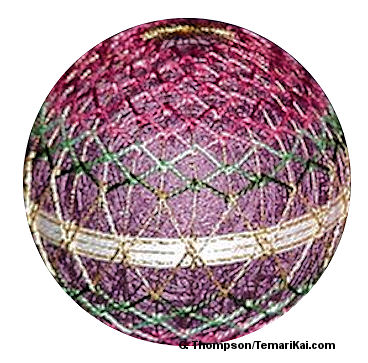 |
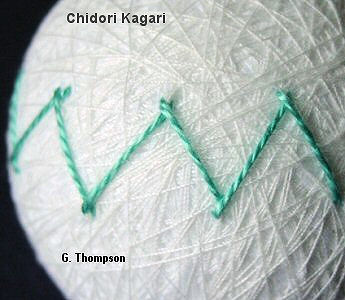 |
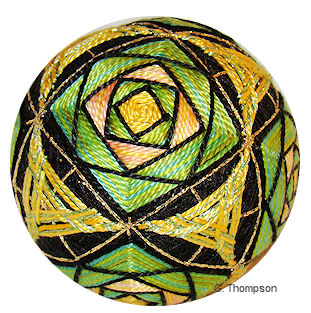 |
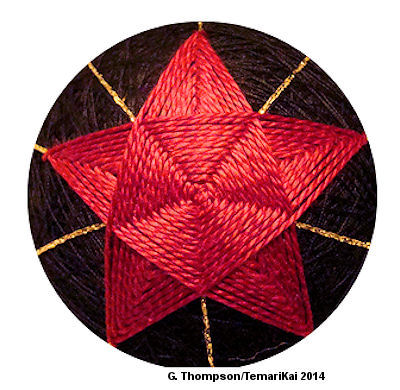 |
| Amime
Kagari - mesh, or net, stitching using chidori
kagari |
Chidori Kagari - a zig zag stitch. It is similar to a tailor's hem stitch, executed with tiny stitches | Bara
- design of layers of off-set polygons, resembling rose
petals when complete |
Hoshi
- using 5-point center and stitching on every other point
to create a star outline. |
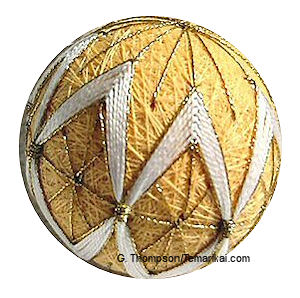 |
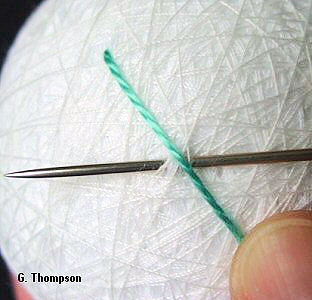 |
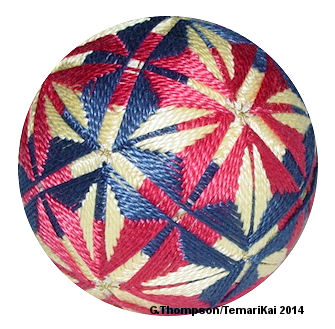 |
|
| Jyouge Douji Kagari - concurrent north-south-north pole stitching, circumscribing the mari in one round | Kagari - tiny stitch; literally, like a hem stitch or tack stitch. The basis of almost all Temari stitches and styles | Kousa Kagari/Style - stitching in layers for interwoven effect |
Maki kagari - wrapping threads around the full circumference of the ball that creates bands of color. |
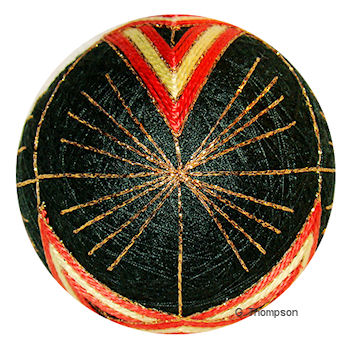 |
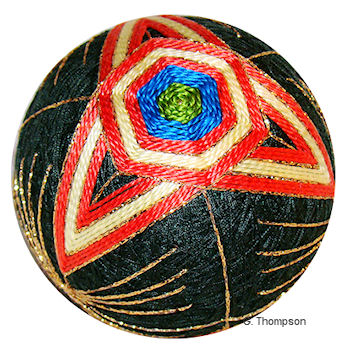 |
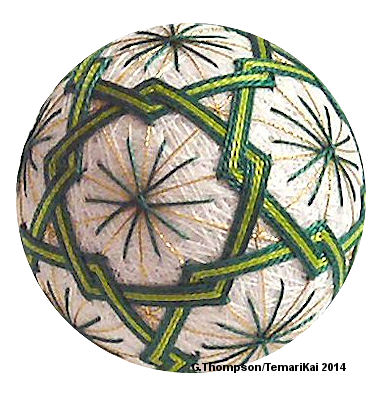
|
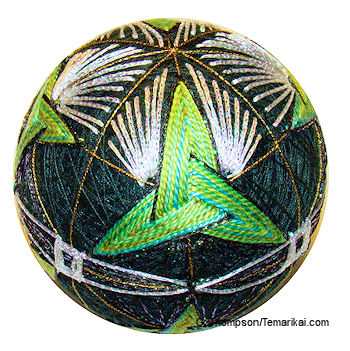 |
| Matusba Kagari - long straight stitches arrayed in a star-burst or spray bundle | Mitsubane kikkou - hexagon center with three wings radiating outward from it. | Nejiri Kagari/Style - interlocking individual shapes in a design | Nejiri Mitsubane Kagari - a 3-point, interlocked element worked with one thread |
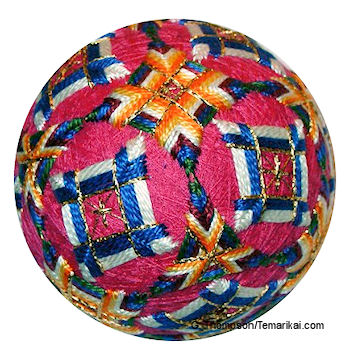 |
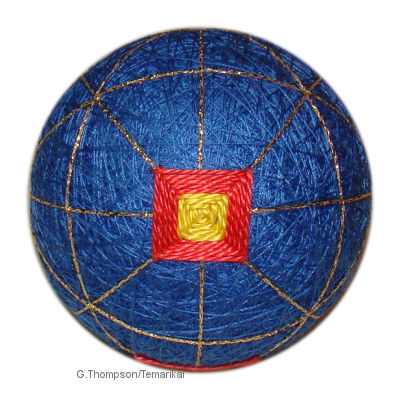 |
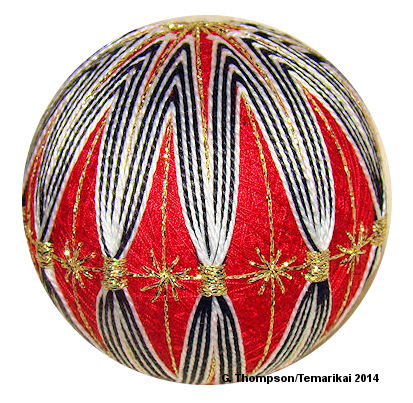
|
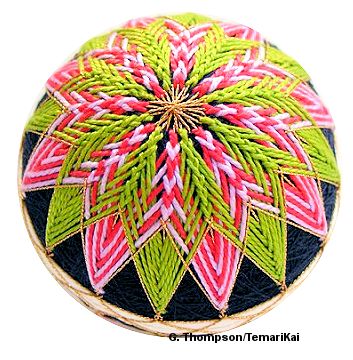 |
| Sakasa Uwagake Kagari - Uwagake Kagari on all corners, from edge to center | Shikaku - solid or open square shape stitched around 2 perpendicular marking lines. | Shitagake Chidori Kagari - form of Chidori Kagari; ensuing rows are placed under the previous rows. | Sujidate Uwagake Kagari - form of Uwagake Chidori with thread carried over previous row. |
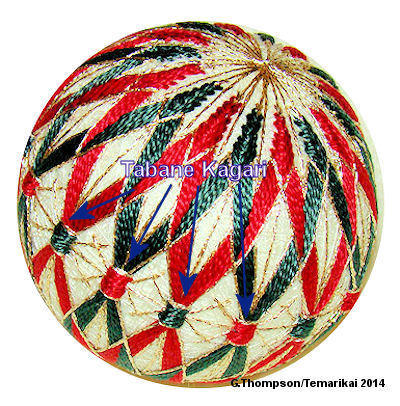 |
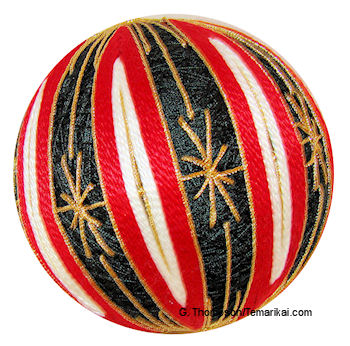 |
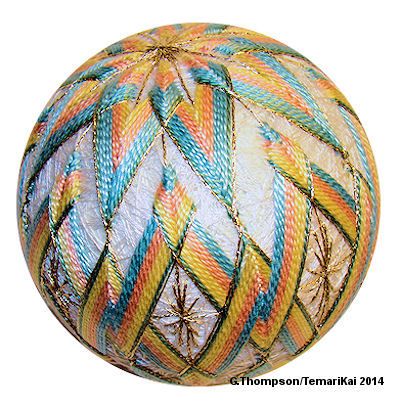 |
| Tabane
Kagari - stitches used to anchor bundles of
threads. |
Tsumu
Kagari - a stitch to create an elongated oval
shape, pointed on each end. |
Uwagake Chidori Kagari - form of Chidori Kagari; working thread carried over all of the previous rows |
This
is a TemariKai.com Printable Page; © 2014, all rights reserved.
Right click to print one copy for personal use.
Last updated 1/2015© 1998 - 2016 TemariKai.com, G. Thompson/PuffinStuff, Inc.
